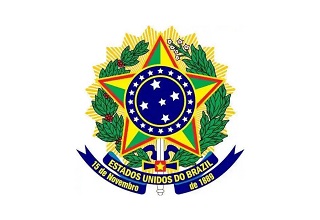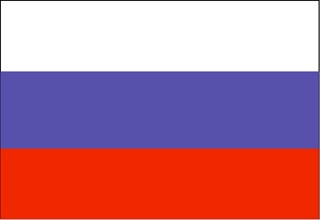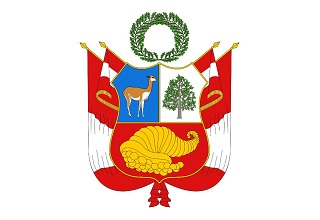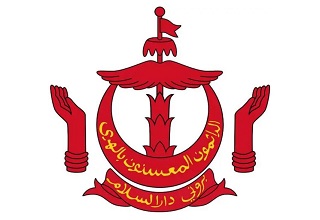Regarding the Inspection and Quarantine Requirements for Fresh Apple from Australia to China
In accordance with the regulations of the Chinese Customs (hereinafter referred to as China Customs) and the Australian Department of Agriculture, Fisheries and Forestry on phytosanitary requirements for the import of fresh apples from Australia into China, effective immediately, the import of fresh apples from Australia that meet the following requirements is permitted.
I. Inspection and Quarantine Basis
(1) "Biosafety Law of the People's Republic of China";
(2) "Law of the People's Republic of China on Import and Export Animal and Plant Quarantine" and its implementing regulations;
(3) "Food Safety Law of the People's Republic of China" and its implementing regulations;
(4) "Measures for the Supervision and Administration of Inspection and Quarantine of Imported Fruits";
(5) "Protocol on Phytosanitary Requirements for the Import of Fresh Apples from Australia into China between the General Administration of Customs of the People's Republic of China and the Australian Department of Agriculture, Fisheries and Forestry".
II. Permitted Import Commodity Names
Fresh apple (hereinafter referred to as apple) is scientifically known as Malus domestica L., and its English name is Apple.
III. Permitted Origin
Apple-producing regions in Australia.
IV. Registration
Orchards, packing houses, and cold-processing facilities for apple exports to China must be audited by the Australian Department of Agriculture, Fisheries, and Forestry and registered with China Customs. Registration information includes name, address, and registration number, ensuring accurate traceability in the event that exported goods fail to comply with the relevant provisions of this Announcement. Before each export season, the Australian Department of Agriculture, Fisheries, and Forestry must provide a list of registered facilities to China Customs, which will be published on the website of the General Administration of Customs after review and approval by China Customs.
V. List of Quarantine Pests of Concern to China Customs
1. Bactrocera tryoni
2. Ceratitis capitata
3. Cydia pomonella
4. Epiphyas postvittana
5. Eriosoma lanigerum
6. Monilinia fructicola
7. Botryosphaeria stevensii (=Diplodia mutila)
VI. Pre-Export Management
(I) Orchard Management
1. Orchards exporting apples to China must maintain good sanitary conditions and establish a comprehensive traceability management system to control the occurrence of pests. Under the supervision of the Australian Department of Agriculture, Fisheries and Forestry (DAF), integrated pest management (IPM) should be implemented, including end-of-season tree pruning and management, pest and disease monitoring, and biological and chemical control measures.
2. DAF should develop management plans for quarantine pests of concern to Chinese Customs and organize orchard monitoring. Pest monitoring and control in orchards exporting to China should be carried out under the supervision and guidance of professional technicians from DAF. These technicians should receive training from DAF or its authorized agencies.
3. Orchards exporting to China must maintain pest monitoring and control records and provide them to Chinese Customs upon request. Control records should include the name, dosage, and timing of all chemical agents used during the growing season.
4. Targeting Ceratitis capitata and Bactrocera tryoni.
(1) From fruit fly pest-free areas: Tasmania is a pest-free area for Ceratitis capitata and Bactrocera tryoni. Apple orchards exporting to China must establish a monitoring and trapping system and maintain the state's existing pest-free status. If Ceratitis capitata or Bactrocera tryoni is found, the Australian Department of Agriculture, Fisheries and Forestry must notify the Chinese Customs within 48 hours and immediately activate the National Epidemic Emergency Action Plan, including conducting a demarcation survey by setting up more traps to determine the extent of the fruit fly outbreak, the outbreak location, the surrounding areas and the buffer zone, and taking fruit samples. The affected areas must suspend the export of apples to China or carry out pest control according to the methods recognized and approved by the Chinese Customs.
(2) From fruit fly-infected areas (areas outside Tasmania, i.e. the Australian mainland): Ceratitis capitata only occurs in Western Australia and not in other parts of Australia. Bactrocera tryoni only occurs in the eastern part of Australia and not in Western Australia. Orchards exporting fruit to China must be visually inspected or monitored for fruit flies using traps by the Australian Department of Agriculture, Fisheries and Forestry or its authorized personnel from flowering to harvest.
5. Regarding Cydia pomonella, apples exported to China must be produced in areas recognized and approved as free of or with low pest prevalence according to the International Standards for Phytosanitary Measures, or must utilize a system management measure recognized by China Customs (see Annex 1). Western Australia does not have any Cydia pomonella infestations.
6. Regarding Monilinia fructicola and Botryosphaeria stevensii (Diplodia mutila), apples exported to China must be produced in areas recognized and approved as free of or with low pest prevalence according to the International Standards for Phytosanitary Measures, or must utilize a system management measure recognized by China Customs (see Annex 2).
7. For other quarantine pests of concern to Chinese Customs, such as Epiphyas postvittana and Eriosoma lanigerum, orchards exporting apples to China must be monitored every two weeks from flowering to harvest, focusing on branches, stems, leaves, and fruit for these pests. If any pests are found, immediate control measures must be taken.
(II) Processing and Packaging Management
1. Apples exported to China must be processed and packaged in packinghouses approved by the Australian Department of Agriculture, Fisheries, and Forestry. Packinghouses and cold storage facilities must maintain good sanitary conditions and have measures in place to prevent reinfestation by pests.
2. During processing and packaging, apples must be selected, washed, sorted, and graded to ensure they are free of insects, mites, rotten fruit, branches, leaves, roots, and soil. Defective fruit must be removed during processing and treated with post-harvest fungicides.
3. Packaged apples must be immediately stored and kept separate to prevent reinfestation by pests.
(III) Packaging Requirements
1. Packaging materials must be clean, sanitary, unused, and comply with relevant Chinese plant quarantine requirements.
2. If packaging boxes have ventilation holes, use insect screens (maximum pore size 1.6 mm), durable plastic bags or liners (including perforations), or tape to cover each box's ventilation holes or the entire pallet. Alternatively, use microporous packaging bags to cover each box's ventilation holes or the entire pallet to prevent pest entry. Alternatively, ventilated boxes can be packaged directly in a sealed safe room or container to prevent reinfestation.
3. If wooden packaging is used, it must comply with the requirements of International Standard for Phytosanitary Measures No. 15 (ISPM 15).
4. Each box must be labeled in English with the fruit name, country, place of origin (state), orchard or its registration number, and packing house or its registration number. Each box and pallet must be labeled "输往中华人民共和国" or "Exported to the People's Republic of China" in Chinese or English.
(IV) Quarantine Treatment Requirements Apples imported to China from fruit fly-infested areas (outside Tasmania, i.e., mainland Australia) must be cold-treated for fruit fly protection. This cold treatment must be conducted under the supervision of the Australian Department of Agriculture, Fisheries and Forestry or its authorized personnel, in accordance with the pre-export cold treatment procedures (see Appendix 3) or the in-transit cold treatment procedures (see Appendix 4).
Apples imported to China from Western Australia must be cold-treated for Ceratitis capitata. The cold treatment criteria must meet the following: 1°C or below (flesh temperature) for 16 consecutive days or more; or 2.1°C or below (flesh temperature) for 21 consecutive days or more.
Apples imported to China from mainland Australia (outside Western Australia) must be cold-treated for Bactrocera tryoni. The cold treatment criteria must meet the following: 3°C or below (flesh temperature) for 18 consecutive days or more.
(V) Pre-export Inspection and Quarantine
1. For two years following the issuance of this announcement, the Australian Department of Agriculture, Fisheries and Forestry (DAF) or its authorized personnel shall subject 2% of cartons of apples imported into China to quarantine, sampling a minimum of 600 fruits, and dissecting 60 of these fruits for inspection. If no phytosanitary issues arise within two years, the sampling number may be reduced to 1% of cartons, but the sampling volume must not be less than 600 fruits.
2. If quarantine pests of concern to Chinese Customs are detected, the entire shipment will not be exported to China. If Cydia pomonella, Monilinia fructicola, or Botryosphaeria stevensii (Diplodia mutila) is detected for the first time, exports from the relevant orchard to China will be suspended for the current season, and the corresponding packing house will be assessed for suspension based on the results of the investigation. If the shipment originates from a pest-free production area or production site, the relevant pest-free production area or production site will be removed from the list. DAF shall identify the cause of the non-compliance and implement corrective measures to prevent recurrence. Chinese Customs will decide whether to lift the suspension based on the DAF's corrective actions.
(VI) Phytosanitary Certificate Requirements.
1. For goods that pass quarantine, the Australian Department of Agriculture, Fisheries and Forestry (DAF) shall issue a phytosanitary certificate, indicating the orchard and packing house registration numbers, and an additional statement stating: "This consignment complies with the requirements specified in the Protocol of Phytosanitary Requirements for Export of Fresh Apples from Australian to China, and is free from quarantine pests of concern to China."
2. For apples that undergo pre-export cold treatment, the phytosanitary certificate shall indicate the quarantine treatment method, treatment temperature, duration, and the name or registration number of the treatment facility. For apples that undergo cold treatment during transport, the phytosanitary certificate shall be marked "Cold treatment in transit" and indicate the cold treatment temperature, treatment time, container number, and seal number.
3. Before conducting trade, the Australian Department of Agriculture, Fisheries and Forestry (DAF) shall provide a sample of the phytosanitary certificate to the Chinese Customs for confirmation and record-keeping.
VII. Entry Inspection and Quarantine and Handling of Unqualified Products
Upon arrival of apples imported into China at the port of entry, Chinese Customs will conduct inspection and quarantine in accordance with the following requirements.
(I) Verification of Relevant Certificates and Labels
1. Verify whether the imported fruit has obtained the "Entry Animal and Plant Quarantine Permit."
2. Verify whether the plant quarantine certificate complies with the provisions of Article 6, paragraph (6) of this Announcement.
3. Verify whether the labels on the packaging boxes or wooden packaging comply with the provisions of Article 6, paragraph (3) of this Announcement.
4. For goods that have undergone cold treatment before export, the plant quarantine certificate, the cold treatment report signed and confirmed by the Australian Department of Agriculture, Fisheries and Forestry, and the fruit temperature probe calibration record must be verified to ensure that they comply with the provisions of Article 6, paragraph (4) of this Announcement.
5. For goods that have undergone cold treatment during transportation, the plant quarantine certificate, cold treatment report, and fruit temperature probe calibration record must be verified to ensure that they comply with the provisions of Article 6, paragraph (4) of this Announcement.
(II) Entry Inspection and Quarantine
1. Apples imported into China must enter through ports permitted by Chinese customs for the import of fruit.
2. Imported apples will be subject to inspection and quarantine in accordance with relevant laws, administrative regulations, and rules. Those that pass inspection and quarantine will be permitted entry.
(III) Disqualification Handling:
1. If apples are found to originate from unregistered orchards, packaging plants, or cold-treatment facilities, the shipment will not be permitted entry.
2. For shipments originating from fruit fly infestation areas, if the cold-treatment is deemed ineffective, the shipment will be subject to on-shore cold-treatment (which may be performed within the container), return, or destruction.
3. If live quarantine pests listed in Article 5 of this Announcement, newly discovered quarantine pests from Australia, or soil are detected, the shipment will be returned, destroyed, or quarantined.
4. If non-compliance with China's national food safety standards is found, the shipment will be returned or destroyed.
5. If any of the above non-compliance is discovered, Chinese Customs will immediately notify the Australian Department of Agriculture, Fisheries and Forestry (DAF) and, depending on the circumstances, suspend apple imports from the relevant orchards, packing houses, and cold-treatment facilities. If the apples originate from pest-free areas or production sites, their status as pest-free areas or production sites will be revoked. DAF will investigate the cause of the non-compliance and implement corrective measures to prevent similar incidents from recurring. Chinese Customs will decide whether to lift the suspension based on the DAF's corrective actions.
GACC
August 5, 2025
Appendix 1
Systematic Measures for Cydia Pomonella
1. Systematic Control Measures
Registered orchards must implement orchard control procedures approved by the Australian Department of Agriculture, Fisheries and Forestry (DAF) (e.g., integrated pest management for apples). DAF is responsible for ensuring that growers are aware of the need for field hygiene and pest control measures for Cydia Pomonella. Registered orchards must maintain pest control records for inspection. Details of these control procedures must be provided to Chinese Customs, if necessary, before trade commences.
DAF or its authorized personnel must oversee growers' regular monitoring/surveys for Cydia Pomonella to ensure the effectiveness of these measures. Orchards must maintain annual monitoring records using a standard reporting format. These records must be provided to Chinese Customs, if necessary. Monitoring for Cydia Pomonella requires the use of special traps in orchards. If intercepted, the orchard must implement control measures.
2. Fruit Opening Inspection
A sample of 600 fruit pieces from each shipment will be inspected, and 60 pieces will be opened to check for Cydia pomonella larvae. The fruit may be removed from the discarded fruit. If Cydia pomonella larvae are found, the shipment will not be released until remedial measures are in place.
Appendix 2
Systematic measures for Monilinia fructicola and Botryosphaeria stevensii (=Diplodia mutila)
1. Prune and maintain orchard hygiene before and during winter. Monitor orchards for canker symptoms and prune affected branches or use fungicides (e.g., copper sprays) to control them.
2. Monitor orchards for symptoms of these pathogens every two weeks from flowering until harvest. Identify any pathogens found.
3. If any of these pathogens are detected, control measures will be implemented in the orchard or, alternatively, fruit exports from the orchard will be suspended for the current export season. Control measures include appropriate chemical control and removal of infected plant material.
4. At harvest, inspect fruit for symptoms and remove any fruit found to be infected with any of these pathogens.
5. If any of the above pathogens are found during a quarantine inspection by the Australian Department of Agriculture, Fisheries and Forestry or its authorized officials, the consignment will not be exported.
6. If any of the above pathogens are found during Chinese Customs inspection, the shipment will be returned or destroyed. Chinese Customs will notify the Australian Department of Agriculture, Fisheries and Forestry and suspend the export eligibility of the relevant orchards this season.
Appendix 3
Pre-export cold treatment operation procedures
I. Type of cold treatment facility
1. Pre-export cold treatment can only be carried out in cold treatment facilities approved by the Australian Department of Agriculture, Fisheries and Forestry or by the Australian Department of Agriculture, Fisheries and Forestry.
2. The Australian Department of Agriculture, Fisheries and Forestry or its authorized officials shall ensure that the cold treatment facilities used by exporters meet appropriate standards and have refrigeration equipment that can enable the fruit to reach and maintain the required temperature.
3. The Australian Department of Agriculture, Fisheries and Forestry or its authorized officials shall maintain a registration document for cold treatment facilities approved for pre-export fruit to China. The document should include the following:
(1) The location and construction plan of all facilities, including detailed contact information of the owner/operator;
(2) The dimensions and capacity of the facilities;
(3) The type of insulation of the walls, floors and ceilings;
(4) The brand, style, type and capacity of the refrigeration compressor, evaporator and air circulation system;
(5) The temperature range of the equipment, the specifications and details of the defrost cycle control and any integrated temperature recording equipment.
4. Before the start of each apple export season, the Australian Department of Agriculture, Fisheries and Forestry (DAF) is required to submit a list of currently registered cold treatment facilities, including their names and addresses, to China Customs.
II. Type of Recorder
DAF or its authorized officials must ensure that probes and temperature recorders meet the following requirements:
1. Probe temperatures must be between -3.0°C and +3.0°C, with an accuracy of ±0.15°C;
2. They must be able to accommodate the required number of probes;
3. They must be able to record and store processing data;
4. Under the supervision of DAF or its authorized officials, they must be able to record all probe temperatures at least once per hour with the required accuracy;
5. They must be able to print out the results, identifying each probe, time, and temperature, and indicating the recorder model and container number.
III. Temperature Probe Calibration
Calibration must be performed using a standard thermometer approved by DAF officials in a mixture of crushed ice and distilled water:
1. Any probe that reads outside of 0°C ± 0.3°C must be replaced with another probe that meets this standard;
2. At the completion of processing, the Australian Department of Agriculture, Fisheries and Forestry or its authorized officer must verify the calibration value of the fruit temperature probe using the calibration method mentioned.
IV. Probe Insertion
1. The fruit on the tray must be pre-cooled and loaded into the cold treatment room under the supervision of the Australian Department of Agriculture, Fisheries and Forestry or its authorized officer. Pre-cooling can be done by the exporter himself.
2. Use at least two probes to measure the room temperature at the outlet and return air outlet respectively, and insert at least the following four probes to measure the fruit temperature:
(1) One is located in the center of the fruit in the middle of the cold treatment room;
(2) One is located at the corner of the top layer of fruit in the middle of the cold treatment room;
(3) One is located in the middle of the fruit near the return air outlet;
(4) One is located at the top of the fruit near the return air outlet.
3. The insertion of the probe and the connection to the recorder must be completed under the supervision and guidance of the Australian Department of Agriculture, Fisheries and Forestry officers.
4. The recorder may be activated at any time, but the treatment time will not begin until all fruit temperature probes have reached the specified temperature.
5. When using the minimum number of probes, if any probe fails for more than four consecutive hours, the treatment will be invalid and must be restarted.
V. Review of Treatment Results
1. If the treatment record indicates that all treatment parameters have been met, an official from the Australian Department of Agriculture, Fisheries and Forestry may authorize the termination of treatment and calibrate the probes. If the probe calibration results meet the requirements of Section 3, the treatment will be considered successfully completed.
2. The probes must be calibrated before the fruit is removed from the treatment room.
VI. Confirmation of Treatment Results
1. The printed cold treatment temperature record must contain statistical data that matches the treatment parameters to demonstrate that the cold treatment has been completed.
2. Upon confirmation of the success of the treatment, the Australian Department of Agriculture, Fisheries and Forestry must endorse the cold treatment temperature record and provide it to China Customs for review upon request.
3. If the treatment fails to meet the required cold treatment requirements, the recorder may be reconnected and the treatment may be continued if one of the following conditions is met:
(1) The Australian Department of Agriculture, Fisheries and Forestry confirms that the conditions required by Article 6 are still met.
(2) The time interval between the stop and the restart is within 24 hours.
(3) In both cases, data collection may continue from the time the recorder is reconnected.
VII. Loading into containers
1. Before loading, the container must be inspected by an officer of the Australian Department of Agriculture, Fisheries and Forestry to ensure that it is free of pests and the entrance must be covered to prevent pests from entering.
2. The fruit must be packed in a building with insect-proof measures; or the exit of the cold storage room and the entrance of the container must be connected with insect-proof materials.
VIII. Sealing of containers
1. The container loaded with fruit must be sealed by the Australian Department of Agriculture, Fisheries and Forestry or its authorized officers with a coded seal, and the seal number must be indicated on the plant quarantine certificate.
2. The seal can only be opened by Chinese customs officials at the port of entry into China.
IX. Storage of Fruit Not Immediately Boxed
If treated fruit is not immediately boxed, it may be temporarily stored under the supervision of the Australian Department of Agriculture, Fisheries and Forestry or its authorized officials.
1. If the fruit is stored in a cold treatment room, the door of the cold treatment room must be closed.
2. If the fruit needs to be transferred to another storage room, the method of transfer must be approved by the Australian Department of Agriculture, Fisheries and Forestry, and no other fruit may be stored in the storage room.
3. The fruit must be boxed in accordance with Article 7 under the supervision of the Australian Department of Agriculture, Fisheries and Forestry.
X. Phytosanitary Certificate
1. The temperature, duration, and name or registration number of the cold treatment facility before export must be stated on the phytosanitary certificate.
2. Upon importation of apples, a phytosanitary certificate and a cold treatment report must be submitted to Chinese Customs. The report must be accompanied by a cold treatment temperature record and a fruit temperature probe calibration record signed and confirmed by the Australian Department of Agriculture, Fisheries and Forestry.
Appendix 4
In-Transit Cold Treatment Operation Procedures
I. Container Type
The container must be a self-refrigerated (integrated) transport container with refrigeration equipment capable of reaching and maintaining the required temperature.
II. Recorder Type
The Australian Department of Agriculture, Fisheries and Forestry or its authorized official must ensure that the probes and temperature recorders meet the following requirements:
1. Probe temperature must be between -3.0°C and +3.0°C, with an accuracy of ±0.15°C;
2. A sufficient number of probes must be available;
3. They must be capable of recording and storing process data;
4. All probe temperatures must be recorded at least once per hour with the required accuracy;
5. The printed temperature record must record the time and temperature for each probe and indicate the recorder model and container number.
III. Probe Calibration
1. Calibration must be performed using a standard thermometer approved by the Australian Department of Agriculture, Fisheries and Forestry or its authorized official in a mixture of crushed ice and distilled water.
2. Any probe reading outside of 0°C ± 0.3°C must be replaced.
3. A "Fruit Temperature Probe Calibration Record" signed and confirmed by the Australian Department of Agriculture, Fisheries and Forestry or its authorized officials must be produced for each container. The original copy must be attached to the accompanying phytosanitary certificate.
4. Upon arrival of the fruit at the Chinese port of entry, Chinese Customs will conduct a calibration inspection of the fruit temperature probes.
IV. Temperature Probe Installation
1. Packaged fruit must be loaded into containers under the supervision of the Australian Department of Agriculture, Fisheries and Forestry or its authorized officials. The packaging boxes must be stacked loosely to ensure adequate airflow.
2. Each container must be equipped with at least three fruit temperature probes and two space temperature probes, with the following specific locations:
(1) Fruit temperature probe No. 1 is installed in the center of the top layer of the first row of fruits in the container;
(2) Fruit temperature probe No. 2 is installed in the center, 1.5 meters (40-foot container) or 1 meter (20-foot container) from the container door, and at half the height of the loaded cargo;
(3) Fruit temperature probe No. 3 is installed on the left side, 1.5 meters (40-foot container) or 1 meter (20-foot container) from the container door, and at half the height of the loaded cargo;
(4) Two space (ambient) temperature probes are installed at the air inlet and return air outlet of the container respectively.
3. All probes must be installed under the supervision and guidance of the Australian Department of Agriculture, Fisheries and Forestry or its authorized officials.
4. Before packing, the fruits must be stored (pre-cooled) in a cold storage room until the pulp temperature reaches 4°C or below.
V. Container Sealing
1. Containers loaded with fruit must be sealed with coded seals by the Australian Department of Agriculture, Fisheries and Forestry or its authorized officials.
2. Seals may only be opened by Chinese customs officials at the Chinese port of entry.
VI. Verification of Treatment Results
1. Probes must be calibrated before the fruit is removed from the container.
2. If the fruit temperature probe records show compliance with technical specifications and the probe calibration and placement comply with the requirements of Articles 3 and 4, the treatment shall be considered effective.
VII. Temperature Recording and Confirmation
1. Cold treatment during transportation may begin before the fruit leaves the Australian port and end before or after it arrives at the first port of entry in China.
2. Recording may be started at any time, but the treatment time will not be counted until all fruit temperature probes have reached the designated temperature.
3. The cold treatment temperature records downloaded by the shipping company must be submitted to Chinese Customs. If the cold treatment is completed before the ship arrives at the port of entry, the cold treatment records downloaded on board may be transmitted to Chinese Customs en route.
4. China Customs will review the cold treatment records to ensure they comply with relevant treatment requirements and, based on the probe calibration results, determine the effectiveness of the cold treatment.
VIII. Phytosanitary Certificate
1. The cold treatment temperature and duration, container number, and seal number must be indicated on the phytosanitary certificate; the remark "in transit" must also be included.
2. Upon importation of apples, you must provide China Customs with the phytosanitary certificate, cold treatment report (with cold treatment temperature records), and fruit temperature probe calibration records.




